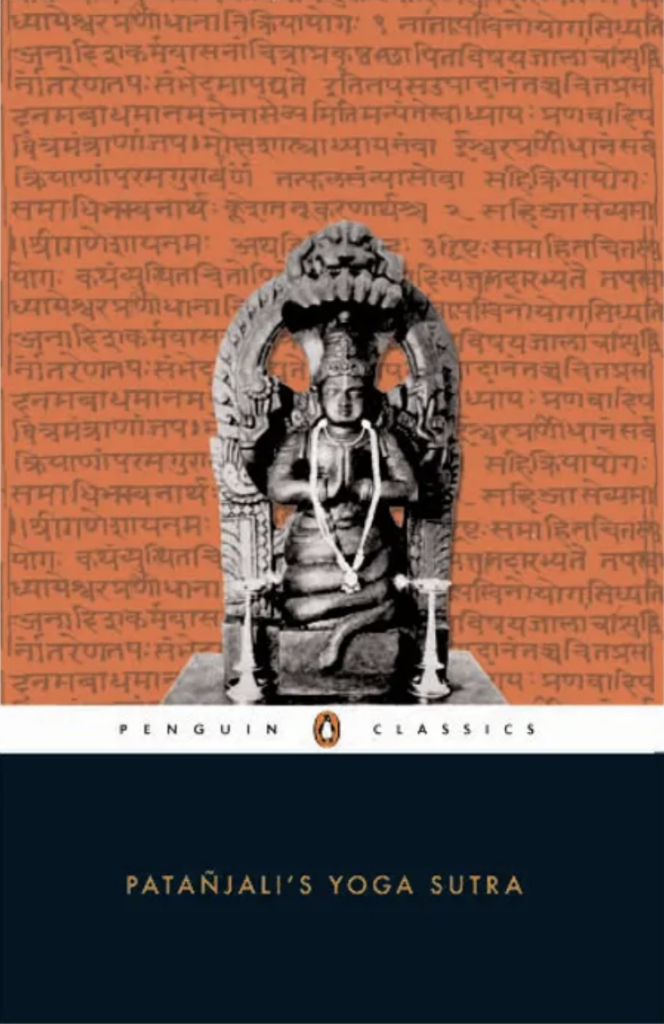Prāṇāyāma (Limb 4)
Breath control, or pranayama (prāṇāyāma) is the fourth of eight limbs of Yoga that discussed in Patañjali’s Yoga Sūtra. The first limb, yama, focuses on disrupting harm to allow for the social practice of yoga. The second limb, niyama, focuses on observances that are central to the practice of yoga. The third limb, āsana, sets the stage for deepened practice, that occupies and takes over physical space in life. Then we move to the prāṇāyāma or breath control. The Yoga Sūtra has many things to say about the practice. It begins with the observation of breath control as a disruption of harmful breathing:



tasmin-sati śvāsa-praśvāsayor gati-vicchedaḥ prāṇāyāmaḥ
tasmin = on this, in this
sati = existing, real, being
śvāsa = mal-inhalation
praśvāsayoḥ = mal-exhalation
gati = flow, movement
vicchedaḥ = cutting asunder, separation, division, breaking, interruption
prāṇāyāmaḥ = control of breath
On the realization of this (the perfection of posture), control of breath should be practiced. It consists in breaking the mal-flow of inhalations and exhalations.
bāhyābhyantara-stambha-vṛttir-deśa-kāla-saṅkhyābhiḥ paridṛṣṭo dīrgha-sūkṣmaḥ
bāhya = external
abhyantara = internal
stambha = stationary
vṛttiḥ = rolling down, moral conduct, kind or respectful behaviour or treatment, mode of being, character
deśa = country, location, region, space
kāla = time
saṅkhyābhiḥ = number
paridṛṣṭaḥ = enumerated, measured, regulated
dīrgha = long
sūkṣmaḥ = subtle, non-extended
It may be interrupted externally or internally, or it may be constrained mid-flow. It may be regulated by taking into account place (of the breath in the body), time (that is, duration of the breath), or in accordance to a fixed number of long or non-extended breaths, as propriety dictates.
bāhyābhyantara-viṣayākṣepī caturthaḥ
bāhya = external
abhyantara = internal
viṣaya = object, content, subject matter
ākṣepī = transcending, overcoming
caturthaḥ = fourth
The fourth (exercise in the control of breath) discards the subject matter of ‘internal’ and ‘external’.
tataḥ kṣīyate prakāśāvaraṇam
tataḥ = hence, then, therefore
kṣīyate = destroyed, dissolved, disintegrated
prakāśa = shining, luminous, effulgent
āvaraṇam = covering
Then that which covers the light is destroyed.
dhāraṇāsu ca yogyatā manasaḥ
dhāraṇāsu = for fixing attention
ca = and
yogyatā = fit for
manasaḥ = mind
And the mind is rendered fit for concentrating.
(YS II.49-53)
Translation by Dr. Shyam Ranganathan. All Rights Reserved.
How does this relate to pranayama (prāṇāyāma) is now used as a method of gaining control over various health modalities, such as blood pressure, diabetes, and anxiety. It helps regulate mood and the internal workings of the body. According to one review study (Saoji, A. A., Raghavendra, B. R., & Manjunath, N. K. (2019). Effects of yogic breath regulation: A narrative review of scientific evidence. Journal of Ayurveda and Integrative Medicine, 10(1), 50–58), pranayama (prāṇāyāma) was:
“…found to influence the neurocognitive abilities, autonomic and pulmonary functions as well as the biochemical and metabolic activities in the body. The studies in the clinical populations, show the effects of yogic breathing in modulating cardiovascular variables in patients with hypertension and cardiac arrhythmias, relieving the symptoms and enhancing the pulmonary functions in bronchial
asthma, as an ancillary aid to modify the body weight and symptoms of pulmonary tuberculosis, to enhance mood for patients withdrawing from cigarette smoking, to reduce the reaction time in specially abled children, to manage anxiety and stress in students, to modulate the pain perception, improve the QoL and sympathetic activity in patients with diabetes, reduce the cancer related symptoms and enhancing the antioxidant status of patients undergoing radiotherapy and chemotherapy for cancer. Thus the cost effective and safe practices of yogic breathing could aid in prevention and management of various non-communicable disease”
The literature is filled with positive assessments of the impact of prāṇāyāma on health outcomes. To learn how to engage in prāṇāyāma by understanding how it differs from ordinary breathing, enroll in Five Limbs: Yoga Sūtra Essentials for Practice, where we learn about how prāṇāyāma fits into the five physical centered limbs of yoga in Book II of the Yoga Sūtra.
Translation by Dr. Shyam Ranganathan. All Rights Reserved.
How does this relate to pranayama (prāṇāyāma) is now used as a method of gaining control over various health modalities, such as blood pressure, diabetes, and anxiety. It helps regulate mood and the internal workings of the body. According to one review study (Saoji, A. A., Raghavendra, B. R., & Manjunath, N. K. (2019). Effects of yogic breath regulation: A narrative review of scientific evidence. Journal of Ayurveda and Integrative Medicine, 10(1), 50–58), pranayama (prāṇāyāma) was:
“…found to influence the neurocognitive abilities, autonomic and pulmonary functions as well as the biochemical and metabolic activities in the body. The studies in the clinical populations, show the effects of yogic breathing in modulating cardiovascular variables in patients with hypertension and cardiac arrhythmias, relieving the symptoms and enhancing the pulmonary functions in bronchial asthma, as an ancillary aid to modify the body weight and symptoms of pulmonary tuberculosis, to enhance mood for patients withdrawing from cigarette smoking, to reduce the reaction time in specially abled children, to manage anxiety and stress in students, to modulate the pain perception, improve the QoL and sympathetic activity in patients with diabetes, reduce the cancer related symptoms and enhancing the antioxidant status of patients undergoing radiotherapy and chemotherapy for cancer. Thus the cost effective and safe practices of yogic breathing could aid in prevention and management of various non-communicable disease”
The literature is filled with positive assessments of the impact of prāṇāyāma on health outcomes. To learn how to engage in prāṇāyāma by understanding how it differs from ordinary breathing, enroll in Five Limbs: Yoga Sūtra Essentials for Practice, where we learn about how prāṇāyāma fits into the five physical centered limbs of yoga in Book II of the Yoga Sūtra.
Previous Limb: Asana
Next Limb: Pratyāhāra